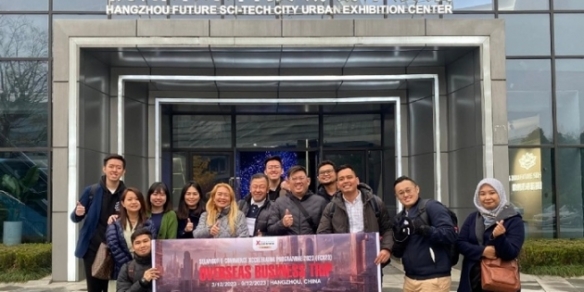Malaysia's data centre blues: A dream that’s tough to realise (Part 1): Page 2 of 2
By Sharmila Ganapathy-Wallace April 26, 2017
Power and bandwidth issues

Infrastructure is not the only issue, Internet bandwidth and electricity costs in Singapore are also lower than that of Malaysia, which are big pull factors for the big data centre players.
“Bandwidth cost is something we have known for a very long time and we are trying to fix that, energy cost took us by surprise because it is only this year we found that the price has dropped below us. We were trying to find out why because not being an oil and gas producing country can actually have a power production cost. What we found out is that they had a new L&G gas terminal built in Singapore and the government wanted to get orders for it as quickly as possible and made some very good offers of gas to all the power producers. So they have five power producers and they all jumped in and they are in an oversupply of power situation at the moment so that’s basically what my understanding is. Obviously when you’re in an oversupply position, prices drop.
“Our consultant says it is not sustainable but it will take a while before prices go up to where they were. Meanwhile there is this window where we have double challenge of paying higher electricity costs, whereas in the past we always used our advantage of the electricity cost being lower.”
How long do they expect the situation to last? Tan says they estimate it will last until 2019 or 2020. He points out also that the Energy Commission has introduced a new cost-based pricing initiative to help lower energy costs in Malaysia. “We participated in a few workshops with KETTHA [Ministry of Energy, Green Technology and Water], the Energy Commission and Tenaga Nasional Bhd. They have completed the first phase of the study which was getting industry input and we understand that it will be ready for 2018.”
What is the alternative in the meantime, then? Tan says that renewal energy is an option that MDEC is exploring. “We realise that when actually an investor invests in a solar farm it doesn’t actually mean that energy from the solar farm will directly power the data centre. What they are looking for is when they invest in a green energy project they want to reap the benefits of green credits from such a project. So they can continue to buy power from the grid because that’s what they want-- reliability and low cost--whereas renewable energy tends to be more expensive and fluctuating. So if that model is workable it will make Malaysia attractive for such projects. My understanding right now is that we have the feed-in-tariff policy at the moment which doesn’t lend itself to this kind of model.”
He shares that MDEC is doing its own background study on renewable energy at the moment. “Once we have our information complete then we can go and start talking to the stakeholders to find out how we execute something like this. So that is potentially In our favour because basically most of this giant cloud players all have corporate KPIs to be 100% renewable by a certain time in the future so all these things will count positively towards our offering.”
When do they expect to complete this study? “We need it quite quickly actually, we hope to start engaging with stakeholders within the next couple of months,” Tan said.
As for the bandwidth issue, dark fibre is a possible solution to lowering bandwidth costs. “Basically dark fibre is unused fibre, so it’s a business model. If I deployed the fibre I can either sell that fibre for someone to use or lease it out or basically light it up and sell bandwidth.
“The telcos in Malaysia don’t like to sell fibre, they’d rather sell bandwidth. They will light up the fibre themselves and sell bandwidth. There are dark fibre players; for example in Cyberjaya, Setia Haruman Technology is one such company but they are a local footprint. We don’t have anyone selling dark fibre on the national level. They are not interested in selling dark fibre so that’s where our challenge is when the big boys come into the country one of the first things they ask for is dark fibre.”
So, what’s the solution to this problem? “We are basically talking to all the stakeholders and seeing where we can make some changes happen but again we are not the regulator. We are trying to convince people that this is the right way to go,” Tan emphasises.
He believes that modern telcos today shouldn’t be looking at trying to continue to maintain the bottom line from what is now a commodity, namely bandwidth. “They need to look at value-added services that run on top of the bandwidth and actually make money off the bandwidth itself.
“We know that for example China Telecom has really transformed itself into a smart city player, they are basically deploying smart city solutions throughout China and bandwidth is just something that has to be there as an infrastructure that makes it happen.
“So if the telcos can think that way instead of trying to protect the cash cow at the moment, I think that would be a good move because I think all of them do see that this is a sunset business. Selling bandwidth is definitely not something you want to bank on for the future so it’s just that I guess they want to maintain their revenue stream while they figure out what to do next,” he concludes.
Related stories:
Massive shift to hybrid infrastructure services is underway: Gartner
Analysis: Google drives the case for cloud adoption
Future of cloud and data centres in Indonesia
For more technology news and the latest updates, follow us on Facebook,Twitter or LinkedIn.


